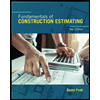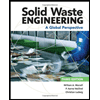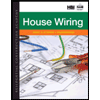A market segment consists of 500 individuals. A Logit mode choice model (with logit parameter equal to 1) has been estimated for this market resulting in the following utility function: U = ẞm 0.40C 0.037 where C is out-of-pocket cost in $ and T is travel time in min. Values of ẞm are: Bus: 0.00; Rail: 0.50; Car: 1.50. For a particular origin-destination pair, the cost of a car trip is $2 and the duration 8 minutes, a rail trip is $1.50 and takes 12 minutes, while a bus takes 20 minutes and costs $1.25. a. Predict the number of trips for each mode. b. Which one of the following policies would lead to the largest increase in bus passengers? Why? (i) An increase in the price of gas that increases the cost of a car trip to $3, while all other parameters remain constant. (ii) Introducing an express service that decreases the travel time of the rail to 10 min, while all other parameters remain constant. (iii) Decrease the cost of the bus to $1, while all other parameters remain constant.
A market segment consists of 500 individuals. A Logit mode choice model (with logit parameter equal to 1) has been estimated for this market resulting in the following utility function: U = ẞm 0.40C 0.037 where C is out-of-pocket cost in $ and T is travel time in min. Values of ẞm are: Bus: 0.00; Rail: 0.50; Car: 1.50. For a particular origin-destination pair, the cost of a car trip is $2 and the duration 8 minutes, a rail trip is $1.50 and takes 12 minutes, while a bus takes 20 minutes and costs $1.25. a. Predict the number of trips for each mode. b. Which one of the following policies would lead to the largest increase in bus passengers? Why? (i) An increase in the price of gas that increases the cost of a car trip to $3, while all other parameters remain constant. (ii) Introducing an express service that decreases the travel time of the rail to 10 min, while all other parameters remain constant. (iii) Decrease the cost of the bus to $1, while all other parameters remain constant.
Engineering Fundamentals: An Introduction to Engineering (MindTap Course List)
5th Edition
ISBN:9781305084766
Author:Saeed Moaveni
Publisher:Saeed Moaveni
Chapter20: Engineering Economics
Section: Chapter Questions
Problem 32P
Related questions
Question

Transcribed Image Text:A market segment consists of 500 individuals. A Logit mode choice model (with logit parameter
equal to 1) has been estimated for this market resulting in the following utility function:
U = ẞm 0.40C 0.037
where C is out-of-pocket cost in $ and T is travel time in min. Values of ẞm are:
Bus: 0.00; Rail: 0.50; Car: 1.50.
For a particular origin-destination pair, the cost of a car trip is $2 and the duration 8 minutes,
a rail trip is $1.50 and takes 12 minutes, while a bus takes 20 minutes and costs $1.25.
a.
Predict the number of trips for each mode.
b. Which one of the following policies would lead to the largest increase in bus passengers?
Why?
(i) An increase in the price of gas that increases the cost of a car trip to $3, while all other
parameters remain constant.
(ii) Introducing an express service that decreases the travel time of the rail to 10 min, while
all other parameters remain constant.
(iii) Decrease the cost of the bus to $1, while all other parameters remain constant.
Expert Solution
This question has been solved!
Explore an expertly crafted, step-by-step solution for a thorough understanding of key concepts.
Step by step
Solved in 2 steps with 3 images

Recommended textbooks for you

Engineering Fundamentals: An Introduction to Engi…
Civil Engineering
ISBN:
9781305084766
Author:
Saeed Moaveni
Publisher:
Cengage Learning

Traffic and Highway Engineering
Civil Engineering
ISBN:
9781305156241
Author:
Garber, Nicholas J.
Publisher:
Cengage Learning

Fundamentals Of Construction Estimating
Civil Engineering
ISBN:
9781337399395
Author:
Pratt, David J.
Publisher:
Cengage,

Engineering Fundamentals: An Introduction to Engi…
Civil Engineering
ISBN:
9781305084766
Author:
Saeed Moaveni
Publisher:
Cengage Learning

Traffic and Highway Engineering
Civil Engineering
ISBN:
9781305156241
Author:
Garber, Nicholas J.
Publisher:
Cengage Learning

Fundamentals Of Construction Estimating
Civil Engineering
ISBN:
9781337399395
Author:
Pratt, David J.
Publisher:
Cengage,


Solid Waste Engineering
Civil Engineering
ISBN:
9781305635203
Author:
Worrell, William A.
Publisher:
Cengage Learning,

Residential Construction Academy: House Wiring (M…
Civil Engineering
ISBN:
9781285852225
Author:
Gregory W Fletcher
Publisher:
Cengage Learning